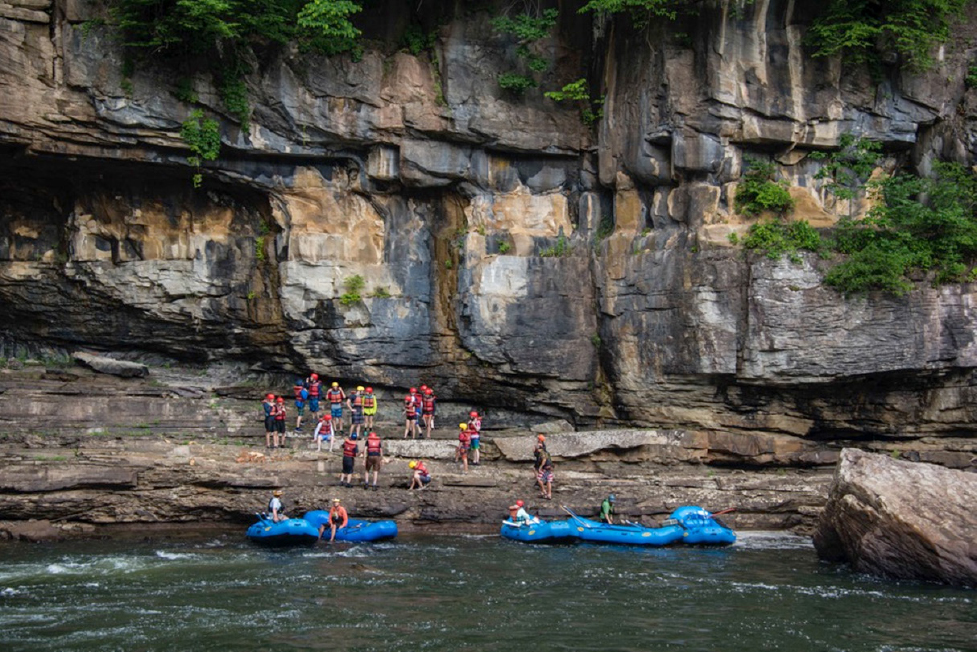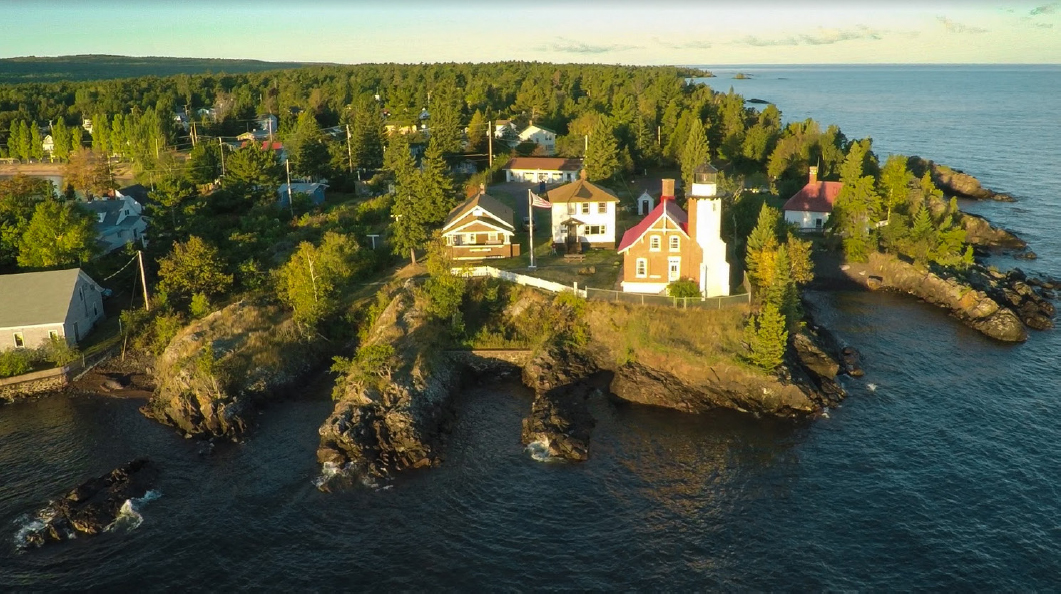6
Economic Development
As emphasized by Brilha as well as a number of other presenters, geoheritage sites are envisioned as drivers of local sustainable economic development. Services and products of all types needed by tourists, recreationists, visiting scientists, and others present income-generating opportunities. Branding offers an indirect but significant addition to a company’s bottom line; consider, for example, the number of companies that use geologic-inspired images in their logos or advertising. Many sites are built on economic activity of the past or present, most notably mining (see Box 4).
Geotourism is the “practice of hosting visitors at natural areas specifically to enjoy geologic features and practices” (NPS/AGI, 2015). As highlighted by Matt Brueseke, Kansas State University, on behalf of the focus group on this topic, the scale of geotourism varies widely, including large areas on private and public lands across different jurisdictions (e.g., UNESCO Global Geoparks or their U.S. equivalents), interconnected travel routes (e.g., Scenic Byways or the Appalachian Trail), parks (e.g., National Parks), and many other configurations. Across these different scales, he said, aspects of the Global Geopark Network provide a model of how to integrate geological resources with outdoor recreation, cultural tourism, economic development, and community engagement. Goods and services that a community can provide include education, cultural activities, recreation, crafts, souvenirs, lodging, and food, explained Jasmine Cardozo Moreira, Ponta Grossa State University (Brazil) and West Virginia University, during the webinar on this topic. No matter the offering, she stressed the importance of adherence to the principles contained in the World Tourism Organization’s Tourism for Sustainable Development Goals.1 During the focus group sessions, several participants emphasized that geotourism must be welcoming to all populations, including people with disabilities (see section on “Culture and Sense of Place” for further discussion).
In recent years, communities, especially in rural areas, have been motivated to develop geoheritage sites as a way to build tourism and generate related income. As Brueseke said, it is important to develop buy-in especially in areas where residents may oppose what they perceive as “setting aside” land or encroaching on property rights. Best practices include developing a sense of community ownership, he said. This can happen through engagement with multiple groups of stakeholders to gain input and support from tourism and visitor associations, conservation organizations, historical sites and organizations, outdoor recreation organizations and business, and geological and other interest groups, among others. “Broadcast to the stakeholders why it [geoheritage] matters, get people involved, and polish the description of the benefits and challenges, be open and seek community input,” he suggested. “Find local champions; it needs to be bottom-up and not top-down.”
___________________
1 See http://tourism4sdgs.org.
Data to demonstrate sustainable economic impact are also important, he said. An economic analysis can show projected revenues and costs involved in making a geoheritage site attractive, educational, and safe for visitors. “The funding challenges are real,” Brueseke acknowledged while sharing elements of the discussion in the geotourism focus group, but potential sources include environmental/conservation organizations and their donor bases, online fundraising platform pages, municipal budgets, and foundations. Land agencies may be “cash-strapped,” but are clued into other funding opportunities or alternatives, he added. Interpretation and training are also needed to enhance visitor engagement, as discussed throughout the workshop. Also reflecting what they heard from other focus groups, Brueseke said the Geotourism focus group saw the value in a “national geoheritage network in the U.S. that we can rely on for information and a way to label our activities that people can relate to.”
Two presentations focused on putting geotourism ideas into action. Originally developed as proposals to become Global Geoparks, they both take advantage of natural and cultural resources to offer many kinds of activities to tourists while supporting local economies. Robert Burns, West Virginia University, spoke about the development of an Appalachian Geopark Aspiring project across three counties in southeastern West Virginia. The area has caves and karsts, a rich coal mining heritage, rivers, multiple state parks, and other attractions (see Figure 4). Although not a total replacement for jobs lost in coal mining, he said, the aspiring geopark, and geoheritage more broadly, can provide employment and revenue to the area’s small towns and cities. “What we are talking about is culture, community, and change based on geoheritage,” he said.

SOURCE: Robert Burns.
Erika Vye, Great Lakes Research Center (Michigan Technological Center), spoke about building community-based geotourism opportunities in the Keweenaw region in Michigan’s Upper Peninsula (see Figure 5). She explained the efforts are built on four priorities: access to geosites and pristine waters; educational opportunities for increased Earth science literacy; sustainable economic opportunities based on the region’s rich geologic underpinnings; and community partnerships. The area is part of the ancestral, traditional, and contemporary lands and waters of the Anishinaabe peoples and has a deep and meaningful geoheritage related to rock, copper, and water. She and William Rose, Michigan Technological University, have set up passenger-boat geotours, contributed to interpretive materials for a water trail for paddlers, and promoted “experiential geotourism,” such as shipwreck and other underwater exploration, among other activities (see Box 4).

SOURCE: Steve Brimm.
In addition to Global Geoparks, geoheritage-related tourism is growing in popularity internationally. Climber and author Conrad Anker, North Face, talked about eco-geotourism, specifically in the Khumbu Himal (Nepal). The region attracts tens of thousands of visitors annually to climb Mount Everest and other peaks in the Himalayas, which is the largest, highest, and most active mountain range on Earth. Tourism provides resources for the local economy, but also creates environmental and cultural impacts, such as duress on the firewood supply and the introduction of Western clothing, technology, and ideas into indigenous communities. The glaciers that provide water to the communities below them are melting due to climate change exacerbated by development far beyond the region, and flood risks have greatly increased. When visiting as a geotourist, Anker addresses the “classic double-edged sword” of wanting to travel to see new places but also using resources and affecting the local culture while doing so. “There’s no clear answer to finding a balance,” he acknowledged, “but the first step is not to appropriate
local culture, but rather to respect it and better understand it. Outdoor recreation is connected to geoheritage. We are on the land, and the more we understand it, the better off we are. My own fascination with geology came from climbing.”




